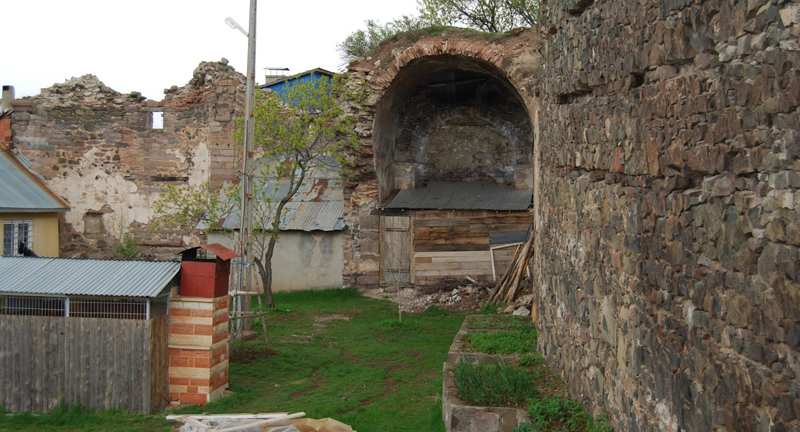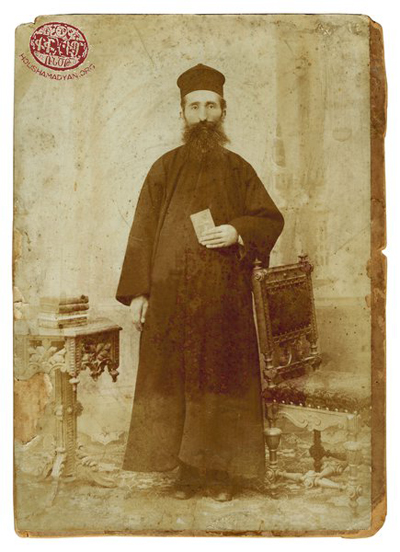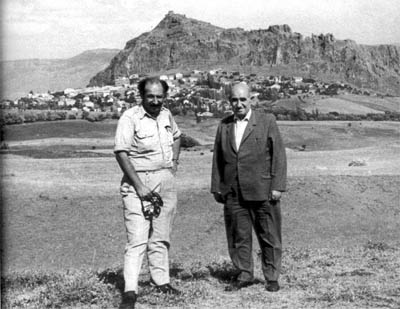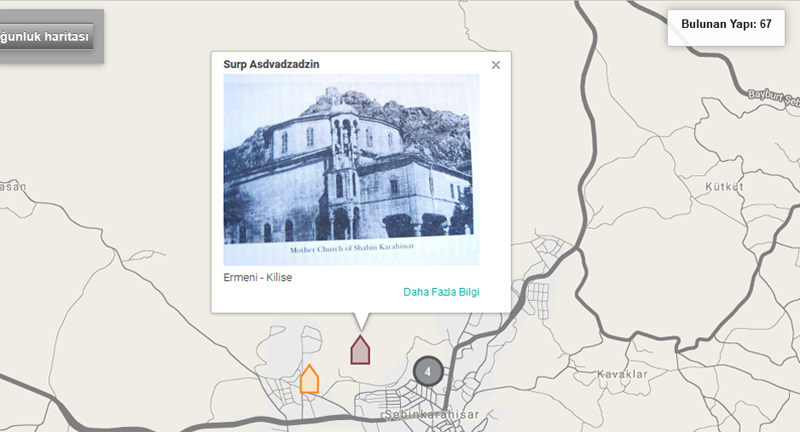Şebinkarahisar (Şabin Karahisar) was better known as Nikopolis or Colonia. An ancient castle-city that was part of the Sivas vilayet of the Ottoman Empire. Today it is a district of Giresun province in the Black Sea region of Turkish Republic.
In early 20th century Şebinkarahisar had 20000 population, of which 8000 were Armenians. In Turkey Cultural Heritage map, on Şebinkarahisar are registered 16 Armenian places: 7 schools, 7 churches and 2 monasteries.

The most monumental among them, Surp Asdvadzadzin church, which can be found in our map by following this link: http://turkiyekulturvarliklari.hrantdink.org/place/28_017 or browsing by looking for the Armenian churches in Giresun/Şebinkarahisar. The church was also called Surp Stepanos Nakhavga and was built in 1274. Surp Asdvadzadzin church was burned down in 1885 due to fire spreading from the nearby bakery operated by Tevekelyans, a prominent family in the city. After 7 years the community rebuilds the church with a 2 story structure, 18 engraved windows, a bell tower and a silver cross. More than 3000 people could attend the masses held in the church.1
Hushamadyan.com has a comprehensive family archive from Şebinkarahisar: The Kibaryan archive, which can be reached here.

Another prominent Şebinkarahisar Armenian is the famous photographer Ara Güler, after whom a street is named in the city.2 Below we see Ara Güler with his Şebinkarahisar born father, behind them the famous Şebinkarahisar rock, on which stands the Şebinkarahisar castle.

1. Հայաստանի եւ հարակից շրջանների տեղանունների բառարան (Dictionary of Armenia and Neighboring Areas Location Names). Թ.Խ. Հակոբյան, Ստ.Տ. Մելիք-Բախշյան, Հ.Խ. Բարսեղյան։ Երեւանի Համալսարանի Հրատարակչություն, Երեւան, 1998։
2. Ara Güler kendi caddesinin açılışını yaptı. http://www.ntv.com.tr/turkiye/ara-guler-kendi-caddesinin-acilisini-yapti,ud0Dobe_6EOFLlU4ZLeS3g


